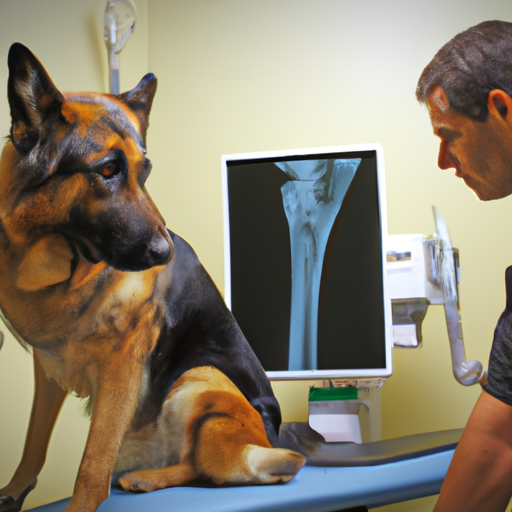Hip dysplasia, a common condition in dogs, can cause your furry friend a great deal of discomfort and reduce their quality of life. But don’t worry, you’re not alone. In this guide, we’ll walk you through how to treat hip dysplasia in dogs, providing practical tips and professional insights to help your companion live a happier, healthier life.
Understanding Hip Dysplasia
Before jumping into treatment options, it’s important to understand what hip dysplasia is and how it affects your dog. Hip dysplasia is a condition where the ball and socket joint in the hip doesn’t fit together properly. This can lead to painful arthritis and decreased mobility.
Symptoms of hip dysplasia can include:
- Difficulty getting up
- Limping
- Decreased activity
- Loss of thigh muscle mass
- Pain and discomfort
Treatment Options for Hip Dysplasia
When it comes to treating hip dysplasia, there are several options that can help manage the condition and improve your dog’s quality of life.
-
Weight Management: Keeping your dog at a healthy weight can reduce the stress on their hips. This can involve a combination of diet changes and regular exercise.
-
Physical Therapy: Physical therapy can help to strengthen your dog’s muscles and improve their mobility. This could include swimming, walking, or specific exercises recommended by a professional.
-
Medication: Non-steroidal anti-inflammatory drugs (NSAIDs) or other pain relief medications can help to manage your dog’s discomfort. Always consult with your vet before starting any medication regimen.
-
Surgery: In severe cases, surgery may be necessary. There are several types of surgeries available, each with their own advantages and disadvantages.
Here’s a simple table to show the pros and cons of each treatment:
| Treatment | Pros | Cons |
|---|---|---|
| Weight Management | Non-invasive, promotes overall health | May be difficult to achieve for some dogs |
| Physical Therapy | Can improve mobility and strength | Requires time and commitment |
| Medication | Can provide immediate relief | Possible side effects |
| Surgery | Can provide a long-term solution | Invasive and expensive |
Lifestyle Changes
In addition to the above treatments, there are several lifestyle changes that you can implement to help manage your dog’s hip dysplasia.
- Provide a Comfortable Environment: Make sure your dog has a comfortable and supportive bed, and try to limit their use of stairs when possible.
- Regular Check-ups: Regular vet check-ups are crucial to monitor your dog’s condition and adjust their treatment as necessary.
A Word on Prevention
While some degree of hip dysplasia is genetic and therefore unavoidable, there are steps you can take to reduce your dog’s risk. These include:
- Feeding your puppy a balanced diet to avoid rapid weight gain.
- Avoiding excessive exercise, particularly in large breed puppies.
- Regular vet check-ups to detect early signs of the condition.
FAQ
Q: Can dogs live a normal life with hip dysplasia?
A: Yes, with proper management and treatment, dogs with hip dysplasia can live a happy and comfortable life.
Q: What breeds are most prone to hip dysplasia?
A: Large breeds like German Shepherds, Labrador Retrievers, and Golden Retrievers are more prone to hip dysplasia. However, it can occur in any breed.
Q: Can diet and exercise really make a difference?
A: Absolutely. Maintaining a healthy weight and regular, moderate exercise can greatly help to manage the symptoms of hip dysplasia.
Remember, every dog is unique and what works best for one might not work for another. Always consult with your vet before starting any treatment regimen. With your love and care, your furry friend can continue to enjoy their life, even with hip dysplasia.



